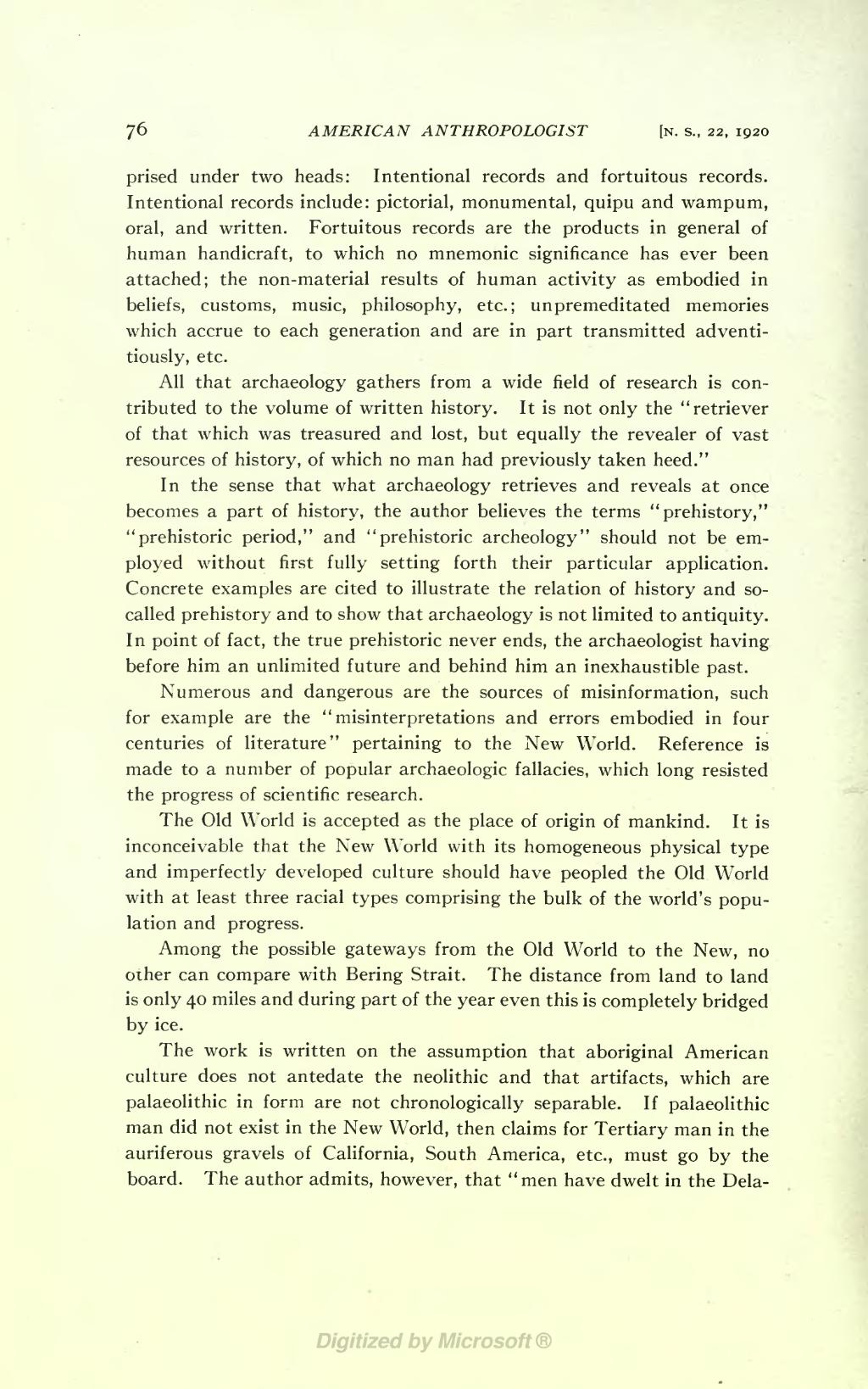76 AMERICAN ANTHROPOLOGIST [N. s., 22, 1920
prised under two heads: Intentional records and fortuitous records. Intentional records include: pictorial, monumental, quipu and wampum, oral, and written. Fortuitous records are the products in general of human handicraft, to which no mnemonic significance has ever been attached; the non-material results of human activity as embodied in beliefs, customs, music, philosophy, etc.; unpremeditated memories which accrue to each generation and are in part transmitted adventi- tiously, etc.
All that archaeology gathers from a wide field of research is con- tributed to the volume of written history. It is not only the "retriever of that which was treasured and lost, but equally the revealer of vast resources of history, of which no man had previously taken heed."
In the sense that what archaeology retrieves and reveals at once becomes a part of history, the author believes the terms "prehistory," "prehistoric period," and "prehistoric archeology" should not be em- ployed without first fully setting forth their particular application. Concrete examples are cited to illustrate the relation of history and so- called prehistory and to show that archaeology is not limited to antiquity. In point of fact, the true prehistoric never ends, the archaeologist having before him an unlimited future and behind him an inexhaustible past.
Numerous and dangerous are the sources of misinformation, such for example are the "misinterpretations and errors embodied in four centuries of literature" pertaining to the New World. Reference is made to a number of popular archaeologic fallacies, which long resisted the progress of scientific research.
The Old World is accepted as the place of origin of mankind. It is inconceivable that the New World with its homogeneous physical type and imperfectly developed culture should have peopled the Old World with at least three racial types comprising the bulk of the world's popu- lation and progress.
Among the possible gateways from the Old World to the New, no other can compare with Bering Strait. The distance from land to land is only 40 miles and during part of the year even this is completely bridged by ice.
The work is written on the assumption that aboriginal American culture does not antedate the neolithic and that artifacts, which are palaeolithic in form are not chronologically separable. If palaeolithic man did not exist in the New World, then claims for Tertiary man in the auriferous gravels of California, South America, etc., must go by the board. The author admits, however, that "men have dwelt in the Dela-
�� �
